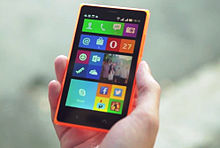Google Nexus is a discontinued line of consumer electronic devices that run the Android operating system. Google managed the design, development, marketing, and support of these devices, but some development and all manufacturing were carried out by partnering with original equipment manufacturers (OEMs). Alongside the main smartphone products, the line also included tablet computers and streaming media players; the Nexus started out in January 2010 and reached its end in October 2016, replaced by Google Pixel.

The LG Optimus 2X is a smartphone designed and manufactured by LG Electronics. The Optimus 2X is the world's first smartphone with a dual-core processor and the third phone in the LG Optimus-Android series. LG introduced the Optimus 2X on December 16, 2010 and the device first became available to consumers in South Korea in January 2011. It was also launched in Singapore on March 3, 2011. The Optimus 2X runs the Android 2.3 software version since the upgrade in November 2011, but the latest offering is Android 4.0. The phone holds the record for the longest update holdout, taking 16 months to receive a firmware update from Android 2.2 to 2.3.
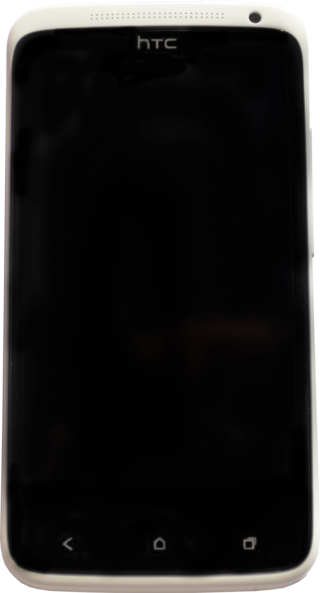
The HTC One X is a touchscreen-based, slate-sized smartphone designed and manufactured by HTC. It was released running Android 4.0.3, with the HTC Sense 4.0 skin. The One X is powered by the NVIDIA Tegra 3 for most international GSM carriers, making this the first HTC phone to be equipped with a quad-core processor, while a variant which is LTE capable is powered by the Qualcomm Snapdragon S4 dual-core 1.5 GHz Krait processor. The One X was announced on February 26, 2012, at the Mobile World Congress and was HTC's sixth flagship product, leading the HTC One series from the time of its release through April 2013, when its successor the HTC One (M7) was announced.

Samsung Galaxy Ace 2 (GT-I8160) is a smartphone manufactured by Samsung that runs the Android operating system. Announced and released by Samsung in February 2012, the Galaxy Ace 2 is the successor to the Galaxy Ace Plus.
The Sony Xperia sola is an Android smartphone from Sony released in 2012. It runs Android 2.3 (Gingerbread) and is upgradeable to Android 4.0. The Xperia sola features a 1 GHz dual-core processor, 512 MB RAM and a 3.7" Reality Display touch-screen with Sony's Mobile Bravia Engine. It is the earliest known smartphone to feature a touch screen able to detect a floating finger, which Sony branded as "Floating Touch".
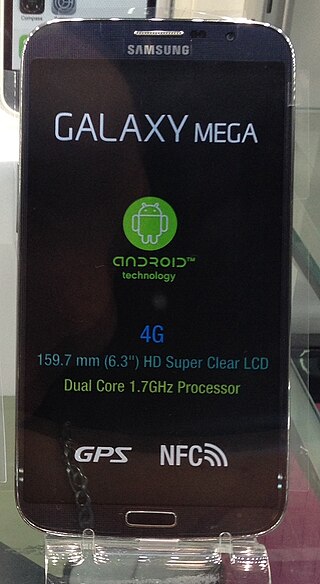
The Samsung Galaxy Mega is an Android-based phablet that was manufactured and released by Samsung. It was announced on April 11, 2013. The original model featured a 6.3 in (160 mm) screen, though a revised version was released with a 5.8 in (150 mm) screen. It has a 1,280×720 screen, a dual-core 1.7 GHz processor and an 8-megapixel camera. The phone runs Android 4.2.2 "Jelly Bean" software, and internal storage is 8 or 16 GB.

Sony Xperia L (C2104/C2105) is a Sony's budget oriented smartphone manufactured by Sony, announced in March 2013 and launched in May 2013.

The Nokia Lumia 1520 was a flagship Windows Phone phablet smartphone designed and produced by Finnish telecommunications manufacturer Nokia in partnership with American software manufacturer Microsoft. The device was first announced at the Nokia World event on 22 October 2013 in Abu Dhabi, alongside its mid-range phablet stablemate the Nokia Lumia 1320 and Nokia's 10.1 inch Windows RT tablet the Nokia Lumia 2520. Until its discontinuation in the United States on 7 April 2015 the phone served as the flagship device for Nokia's Lumia Series and Microsoft's mobile effort. On 6 October 2015 Microsoft officially announced its flagship phablet successor, the Microsoft Lumia 950 XL, with availability sometime in November 2015.

The Nokia X family was a range of budget smartphones that was produced and marketed by Microsoft Mobile, originally introduced in February 2014 by Nokia. The smartphones run on the Nokia X platform, a Linux-based operating system which was a fork of Android. Nokia X is also known generally as the Nokia Normandy. It is regarded as Nokia's first Android device during the company's Microsoft partnership and was in the process of selling its mobile phone business to Microsoft, which eventually happened two months later.
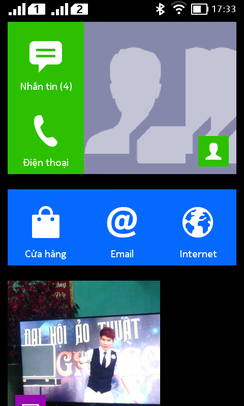
The Nokia X platform was a Linux-based mobile operating system and software platform originally developed by Nokia, and subsequently by Microsoft Mobile. Introduced on 24 February 2014, it was forked from Android and used on all the devices of the Nokia X family. It was also the next Nokia Linux project after the ill-fated MeeGo.

Redmi is a subsidiary company owned by the Chinese electronics company Xiaomi. It was first announced in July 2013 as a budget smartphone line, and became a separate sub-brand of Xiaomi in 2019 with entry-level and mid-range devices, while Xiaomi itself produces upper-range and flagship Xiaomi phones.

The Xiaomi Redmi 1 is a smartphone released in July 2013 in China And August 2013 in Global, developed by the Chinese smartphone company Xiaomi Inc. It is the first product of the Redmi series of smartphones. It came with a 4.7-inch 720x1080 IPS screen, a MediaTek MT6589T Quad-core 1.5 GHz Cortex-A7 processor and originally run Android 4.2.2 Jellybean with the MIUI v5 user interface, upgradeable to Android 4.4.2 Kitkat with the MIUI 9 user interface.

The Xiaomi Redmi 1S, code-named armani HM 1S, is a smartphone released in May 2014, developed by the Chinese company Xiaomi Inc. It is a part of the Redmi series of smartphones, and succeeded the Redmi 1. Visually similar to its predecessor, it comes with a 4.7-inch screen, a quad-core 1.6 GHz Cortex-A7 processor and runs Android version 4.3 (Jellybean), bundled with the proprietary MIUI v5 user interface, which can be upgraded to MIUI v9 based on Android 4.4.4 KTU84P.
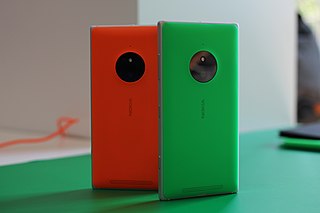
The Nokia Lumia 830 is a smartphone developed by Microsoft Mobile and branded as "Nokia" that runs Microsoft's Windows Phone 8.1 operating system. It was announced on September 4, 2014 at Internationale Funkausstellung Berlin and released in October 2014. It is a successor to the 2012 Nokia Lumia 820 and marketed as an "affordable flagship".
The Nokia N1 is a tablet developed by Nokia, running on Android 5.0. Unveiled on 18 November 2014, it is Nokia's first mobile device since the sale of its original mobile phone business to Microsoft earlier in the year. It was released in January 2015.

The Sony Xperia Z5 Premium is an Android smartphone produced by Sony. Part of the Sony Xperia Z series, the device, at that point known by the project code name "Satsuki", was unveiled along with the Sony Xperia Z5 and Xperia Z5 Compact during a press conference at IFA 2015 on September 2, 2015. The device was first released in Taiwan on November 5, 2015, and was the first smartphone with 4K resolution.

The Nokia 7 Plus is a Nokia-branded upper-mid-range smartphone running the Android operating system. It was announced on 25 February 2018, along with four other Nokia-branded phones.
Oppo phones are smartphones produced by the partially state-owned Chinese company Oppo, running in several countries.
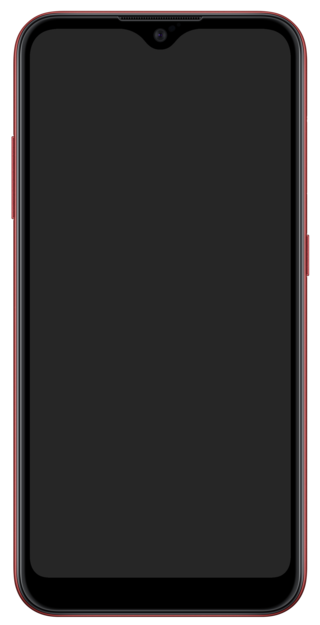
The Samsung Galaxy A01 is a budget Android smartphone manufactured by Samsung Electronics as part of its A series. The phone was announced in December 2019 and released in January 2020. The phone come in the colors black, blue, and red. The phone features a 5.7-inch 720p touchscreen display, a dual camera setup, and comes with. One UI Core 2.0 over Android 10. A similar device, Galaxy M01, was first released in June 2020, which shares some of the features with the Galaxy A01.
Samsung Galaxy F52 5G is a mid-range Android smartphone manufactured by Samsung Electronics as part of the Galaxy F series. It is the first 5G-capable device in the Galaxy F series. It was announced in May 2021 in China and is the first phone in the Galaxy F series to be available in China.
